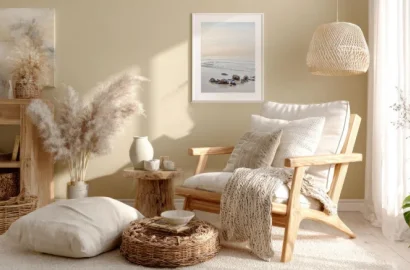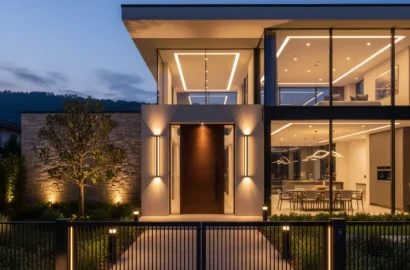Read this comprehensive guide to learn everything about enrolling in a B.Sc. in interior design course. Understand what to look for in a course, how to choose the right college, and discover the best colleges for this degree course.
Interior design is a dynamic and multifaceted field that combines creativity and technical expertise with an understanding of human behaviour and spatial needs. A Bachelor of Science (B.Sc) equips students with a holistic understanding of the discipline, skills, and experiences required to excel in this rewarding profession.
If you are exploring your options in interior design and would like to pursue formal education in the field, this guide will provide you with the insights and information you need to make an informed decision. In this guide, we will dissect the significance of a B.Sc in interior design and key aspects, including the course curriculum, admission process, eligibility criteria, career opportunities and the skills and knowledge needed to be successful in this industry.
Below is a clickable list of everything that we’ll be covering in this article!
Contents:
- What is a B.Sc in Interior Design?
- Why Should You Opt for a B.Sc in Interior Design?
- How To Get Into a B.Sc in Interior Design Course?
- What To Look For in a B.Sc Interior Designing Course?
- How To Choose the Right College for a B.Sc in Interior Design?
- Top 5 Colleges for B.Sc in Interior Design
- Scope and Placement Opportunities After Completing a B.Sc in Interior Design
- Final Thoughts
What is a B.Sc in Interior Design?
A B.Sc in interior design is a 4-year undergraduate programme created to develop creative thinking and technical skills among students. Throughout the course, aspiring students learn how to conceptualise, design, renovate and execute visually pleasing and functional spaces.
This degree course covers the fundamentals of interior design and space planning, progressing to advanced topics such as 2D and 3D modelling and visualisations. Students also delve into practical projects and gain proficiency in specialized software. Upon completing the curriculum, students emerge with an in-depth understanding and confidence in their interior design abilities.
Why Should You Opt for a B.Sc in Interior Design?
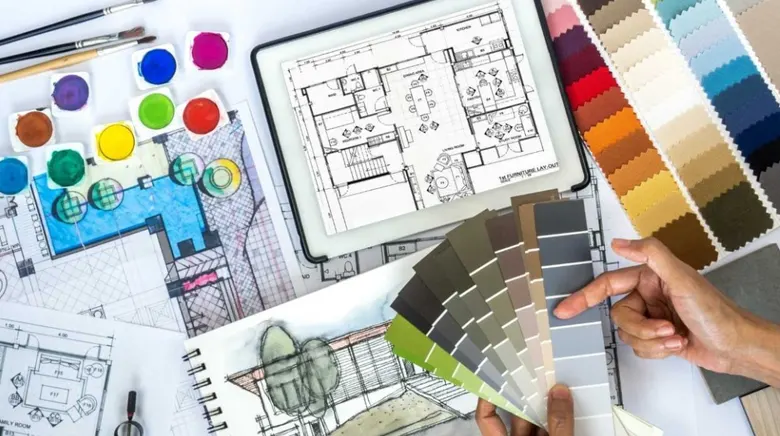
Image Courtesy – Building and Interiors
A B.Sc (Bachelor of Science) in interior design course provides you with a comprehensive understanding of designing visually intriguing and functional interior spaces based on their intended purpose. It covers the basic design principles, techniques, and software skills like 2D and 3D modelling needed to excel in this field. Completing this programme enables you to confidently apply the knowledge and implement them in various interior settings.
While pursuing an interior design course, you also learn how spaces can affect the well-being of individuals and impact the way they emote, behave, feel, and experience. The course teaches you how to convert a space into a functional and aesthetically pleasing one that effectively communicates a story. This degree is ideal for you if you’re looking to turn your passion into an interior design career.
How To Get Into a B.Sc in Interior Design Course?
Before you apply to a college or institute, it’s crucial to understand their admission process and eligibility criteria. This includes understanding if they require entrance exams or scores from your high school exams. Also, make it a point to check out reviews from current students and alumni, as well as the facilities they offer. This helps you to be sure the college is a good match for your academic and career goals. Doing this research upfront gives you the best shot at getting admitted to a reputed institute and having a great college experience.
1. Eligibility Criteria for B.Sc in Interior Design
If you are looking to get admission to the B.Sc interior design course, you need to meet the following eligibility criteria:
– You must have completed your 10+2 examination with a minimum of 50% in each subject or its equivalent from a recognised board.
– For merit-based admissions, aim for scores above 85%.
– The age requirement for the applicants is at least 16 years.
– Students who are currently pursuing their 10+1 are eligible to apply through AIEED. If they qualify, they will be directly admitted to next year’s program.
2. Knowledge and Skill-sets
Before enrolling in an interior design course, it’s important to reflect upon the skill sets that can maximise the benefits of this degree. Let’s take a look at these skills.
Communication Skills

Image Courtesy – Freepik
As an interior designer, you must be able to communicate effectively with your clients to understand their needs, preferences, and design goals. Effective communication allows you to bring ideas to life, ask the right questions, explain your design concepts, and make recommendations. It also enables you to coordinate and collaborate with team members.
Observation Skills
Keen observation skills help you understand your client’s needs, preferences, and lifestyle within their existing space. This allows you to gain valuable insight and provide personalised solutions that address your client’s pain points and design aspirations.
Problem-Solving Abilities
Every design project presents unique challenges. Developing strong problem-solving skills through hands-on experience helps navigate obstacles in interior design.
Space Awareness
Designing a functional and aesthetically pleasing space requires keen spatial awareness. This skill involves visualising how elements come together to create a cohesive and balanced design.
3. Admission Process
The admission process to a B.Sc in interior design usually takes place in two ways: on the basis of merit or through a national-level entrance exam. Some institutes require both, and few of them specifically require applicants to take any of the relevant B.Sc interior design entrance exams.
– Applicants like yourself must have your results from the relevant entrance exams ready before applying. You can then access application forms via the university’s official website. Alternatively, you can also obtain an in-person form from the university.
– Ensure that you fill in the application accurately to match the details in your current documents.
– You are advised to check the list of B.Sc interior design entrance exams offered by different universities and ensure they meet the minimum score required for admission. After that, you can prepare for the entrance exam.
– The All India Entrance Examination for Design (AIEED) is a common test for undergraduate design programs in India, usually held in January and April. Some universities also accept NATA, CAT, and MAT results.
– Once the merit list is released, qualified applicants can proceed with their admission by paying the admission fee.
4. B.Sc Interior Design Entrance Exams
Here’s a list of the B.Sc interior design entrance exams:
All India Entrance Examination for Design (AIEED)
Common Entrance Examination for Design (CEED)
NATA
CAT
MAT
Before preparing for the B.Sc interior design entrance exam, you need to understand its format and what it includes. In most cases, the exam is scored out of 100 points and must be completed within two and a half hours. Here’s a breakdown of the same:
General Ability (30 marks)
– Includes quantitative analysis, English comprehension, and communication skills
– Time allotted: 30 minutes (11:00 am – 11:30 am)
Managerial Ability (30 marks):
– Covers general knowledge and reasoning
– Time allotted: 1 hour (11:30 am – 12:30 pm)
Creative Ability (40 marks)
– Focuses on creative creating
– Time allotted: (12:30 pm – 1:30 pm)
Understanding these sections beforehand and managing time effectively can boost your performance and motivation during the exam.

What To Look For in a B.Sc Interior Designing Course?
By considering the following factors, you can identify a B.Sc interior design course that responds to your academic and professional goals and provides you with the necessary knowledge and skills to succeed in the field of interior design.
1. Course Curriculum
Ensure the interior design programme you choose offers a comprehensive curriculum that balances theoretical knowledge and practical experiences. Read on to learn more about the major aspects to evaluate in this regard.
Core Components a Course Should Cover
Design principles—These principles, such as line, balance, proportion, and scale, form the groundwork for your understanding of the discipline, empowering you to craft visually striking and effective designs. Look out for these principles so that you can develop a deeper appreciation for the nuances of design and learn to apply them in your work.
Technical Drawing—An essential skill that helps you convert intriguing designs into tangible realities, technical drawing also improves the ability to present ideas effectively, especially when interacting with clients and stakeholders. Developing proficiency in technical drawing and interior design software can help you bridge the gap between your creative ideas and their practical implementation, making you better-prepared for the demands of the design industry.
Colour Theory—A strong understanding of colour theory is important to create spaces that are not only aesthetically harmonious but also functionally efficient for the well-being of occupants. Color selection allows you to create the desired mood and also helps manipulate the perception of size and proportion by using lighter/cooler or darker/warmer colours.
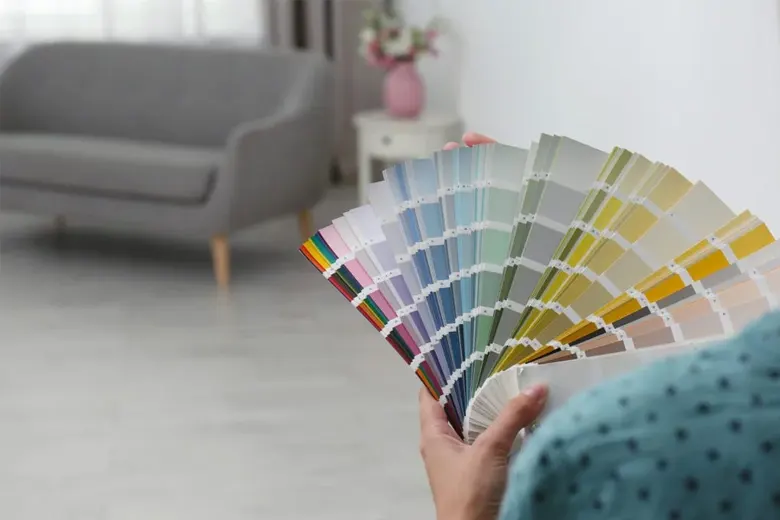
Image Courtesy – Foyr
Materials and Textures—Different materials and textures possess unique properties that can enhance or hinder the functionality of your design. They can also influence the tactile and sensory experiences of the occupants, as well as set the desired mood and lend character to the space.
Lighting Design— Proper lighting can highlight architectural features, accentuate design elements, and create desired visual effects. It impacts the practical use and performance of a space, affecting activities and user experience. The right application of artificial lighting, like the selection and placement of lighting sources, can significantly improve the aesthetics and functionality of interiors.
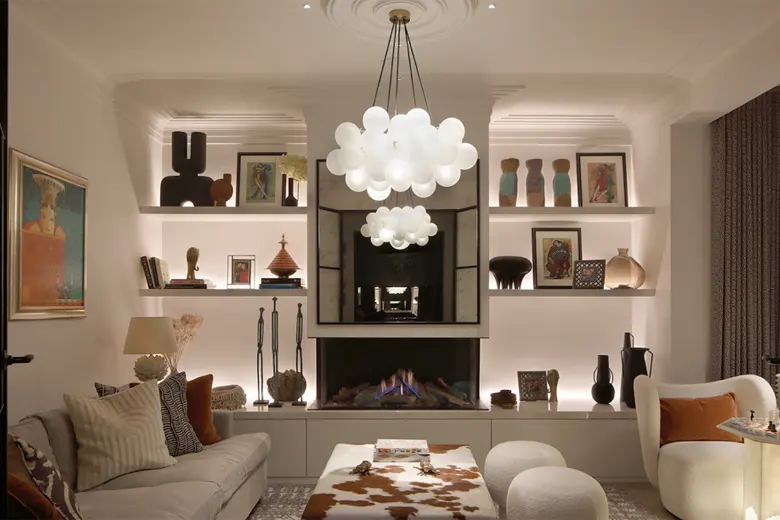
Image Courtesy – John Cullen Lighting
Interdisciplinary Approach
Interior design extends beyond the creative aspect and integrates elements from diverse fields such as architecture, history, photography, literature and construction.
The B.Sc in interior design course you choose must be designed around these multifaceted elements, providing an interdisciplinary approach that enriches your skillset in multiple dimensions.
Practical Training and Internships
Practical training and internships are integral components of an interior design curriculum. They provide hands-on experience and real-world exposure to the industry and involve workshops, studio sessions, and working with an interior design or architecture firm. Internships provide opportunities to network, gain industry insights, and build a body of work.
2. Duration of the Programme
The duration of a B.Sc in interior design program is usually 4 years or 8 semesters.
3. Accreditation and Recognition
Pursuing a B.Sc in interior design from an accredited institute ensures that your education aligns with industry standards. Look for programs accredited by reputed organizations, such as the Council for Interior Design Accreditation (CIDA) or the National Council for Interior Design Qualification (NCIDQ), as this ensures quality and recognition.
Verify that professional bodies and employers recognize the degree. Accredited and recognized institutes also provide access to well-established alumni, improving your learning experience and providing you with expert guidance.
How To Choose the Right College for a B.Sc in Interior Design?
Choosing the right college for a B.Sc in interior design can make or break your career. When filtering out colleges, it’s important to focus on specific aspects that can significantly impact your education and career prospects.
1. Up-to-Date Curriculum
An up-to-date curriculum is essential for staying relevant in the rapidly evolving field of interior design. Look for colleges that regularly update their courses to include the latest design trends, technologies, and industry practices. Check if they cover areas like sustainable design, digital modeling, and emerging design software.
2. Faculty Expertise
The expertise of the faculty can drastically improve your learning experience. Look for colleges with experienced faculty members who have backgrounds in interior design, architecture, and related fields. Check their credentials, industry experience, and involvement in research or professional projects. Faculty members who are actively engaged in the industry can provide valuable insights and mentorship.
3. Opportunities for Practical Application
Choose a college that provides a strong foundation for your interior design career. This includes a comprehensive curriculum that covers design principles, space planning, color theory, materials, building codes, and project management. Look for a course and college that provides the opportunities to develop practical skills through studio projects, internships, and collaborations with industry experts.
4. Good Infrastructure and Ample Resources
Evaluate the college’s infrastructure and resources related to interior design. This includes design studios with modern equipment, computer labs with industry-standard software (such as CAD, BIM, and rendering tools), libraries with design books and journals, and access to material samples and prototyping facilities. A well-equipped campus can enhance your learning experience.
5. Placements and Career Opportunities
Research the college’s track record in placements and career opportunities for interior design graduates. Check if they have partnerships with design firms, companies, and organizations that offer internships, job placements, or mentorship. Look for alumni success stories and the types of positions graduates have secured after completing their degrees.
Top Colleges for B.Sc in Interior Design
Now that we’ve established the importance of choosing the right college for your interior design education, let’s explore some of the best interior design colleges in India that offer a B.Sc degree in the discipline.
1. D Y Patil School of Design, Pune
2. Vogue Institute of Fashion Technology, Bangalore
3. IIFA Multimedia, Bangalore
4. Chandigarh University, Punjab
5. Kalinga University, Raipur
6. Institute of Innovative Designs and Technology, Mumbai
7. Srinivas University, Mangalore
8. JD Institute of Fashion Technology, Delhi
9. Rachna Sansad School of Design, Mumbai
10. Mount Caramel College, Bangalore
Scope and Placement Opportunities After Completing a B.Sc in Interior Design
Completing a B.Sc. in Interior Design opens up a range of career opportunities in the design industry. Here’s a brief overview:
1. Residential Design— Designing and planning the interiors of private homes, condos, apartments, and bungalows.
2. Commercial Design— Designing interiors for office spaces, retail stores, restaurants, hotels, and other commercial establishments.
3. Institutional Design— Designing interiors for educational institutions, healthcare facilities, government buildings, and other public spaces.
4. Hospitality Design— Specialising in the design of hotels, resorts, spas, and other hospitality-related spaces.
5. Specialized Design— Focusing on niche areas like sustainable design, exhibition design, retail design or furniture design.
6. Entrepreneurship— Starting your own interior design practice or providing freelance design services.
Placement opportunities for interior design graduates can be found in:
1. Design Studios: Working for interior design firms specializing in residential, commercial, hospitality, or healthcare design.
2. Architectural Firms: Collaborating with architects on the interior design of building projects.
3. Corporate Offices: Designing office spaces to enhance productivity and employee well-being.
4. Retail Companies: Creating appealing retail environments to attract customers and promote sales.
5. Event Management Companies: Designing event spaces for exhibitions, conferences, and trade shows.
6. Furniture Manufacturing Companies: Developing furniture designs and prototypes.
7. Freelance Work: Offering design services independently to clients.
Additionally, networking, internships, and building a strong portfolio are crucial for securing placements and advancing in the interior design field.
Final Thoughts
With that, we’ve covered the intricacies of a B.Sc in interior design programme, shedding light on eligibility criteria, entrance exams, admission procedure, and course curriculum. If the idea of designing interior spaces intrigues you and you have a knack for design, a career in interior design might be the perfect fit.
We hope that this guide has helped you understand the entire process and what it involves. If you’re considering enrolling in a design course but are not keen on attending classes on campus, check out AND’s interior design courses, which come with dedicated placement support and a job guarantee.
Next Steps
In case you are interested in pursuing an education in interior design and need assistance, here are some resources you can consider:
- Watch this session by Snehanshu Mukherjee, Founding Partner at T.E.A.M and Mansi Almadi, an Interior Designer at Studio Lotus
- Talk to a course advisor to discuss how you can transform your career with one of our courses.
- Check out our Interior Design courses – all courses are taught through live, interactive classes by industry experts.
- Take advantage of the scholarship and funding options that come with our courses to overcome any financial hurdle on the path of your career transformation.
Note: All information and data from external sources are believed to be accurate as of the date of publication.





